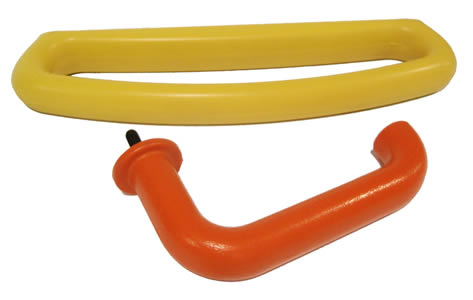Foam Moulding: An Overview
Foam moulding, also known as foam molding, is a manufacturing process that involves shaping foam materials into desired forms. The process utilizes expandable polystyrene (EPS) or polyurethane (PU) foam, which expands and fills the mould, taking the desired shape when exposed to heat or other triggering agents. The result is a lightweight and durable product with exceptional thermal insulation properties.

The Science Behind Foam Moulding
Understanding the science behind foam moulding is essential to grasp its significance in modern manufacturing. During foam moulding, tiny polystyrene or polyurethane beads are mixed with a blowing agent. When subjected to heat, the blowing agent decomposes, leading to the expansion of the beads and filling the mould with the foam material. This process creates a uniform and consistent foam product with excellent insulation properties.
Applications of Foam Moulding
Foam moulding finds applications in various industries due to its remarkable properties. Some of the key applications include:
1. Packaging Solutions
Foam moulding is extensively used in the packaging industry to Foam Moulding create protective and cushioning materials for delicate products. From electronics to fragile items, foam packaging ensures safe transportation and delivery.
2. Automotive Components
The automotive industry utilizes foam moulding to manufacture lightweight and durable components. These include bumpers, armrests, headrests, and interior trims, contributing to enhanced safety and reduced vehicle weight.
3. Building and Construction
In the building and construction sector, foam moulding is employed to produce insulation panels, architectural accents, and decorative elements. The thermal insulation and cost-effectiveness of foam moulding make it an ideal choice for energy-efficient buildings.
4. Furniture and Upholstery
Foam moulding plays a crucial role in the furniture industry, producing comfortable and supportive cushions for sofas, chairs, and mattresses.
5. Marine and Aerospace
The marine and aerospace industries benefit from foam moulding’s lightweight yet sturdy materials for applications like boat hulls and aircraft interior components.
6. Sports and Recreation
In sports and recreational equipment, foam moulding is used to create protective gear, helmets, and flotation devices, ensuring the safety and comfort of users.
Advantages of Foam Moulding
The popularity of foam moulding stems from its numerous advantages, making it a preferred choice for manufacturers worldwide. Some of these advantages include:
Lightweight and High Strength
Foam moulded products are lightweight yet possess excellent strength and durability, making them ideal for various applications.
Thermal Insulation
Foam moulding offers superior thermal insulation properties, making it suitable for temperature-sensitive products and energy-efficient construction.
Cost-Effectiveness
The manufacturing process of foam moulding is cost-effective, enabling the production of large quantities of products at a reasonable cost.
Customization
The versatility of foam moulding allows for intricate and customized designs, catering to specific requirements of different industries.
Eco-Friendly
Foam moulding can use recycled materials, reducing environmental impact and promoting sustainability.
Shock Absorption
Foam moulded products exhibit excellent shock absorption capabilities, protecting delicate items during transportation.
Foam Moulding Vs. Compression Moulding
Foam moulding offers a faster and more efficient manufacturing process than compression moulding, particularly for large-scale production.
FAQs
What are the typical foam moulding materials?
Foam moulding commonly uses expanded polystyrene (EPS) and polyurethane (PU) foam materials.
Is foam moulding eco-friendly?
Yes, foam moulding can use recycled materials, making it a sustainable choice.
What industries benefit the most from foam moulding?
Foam moulding finds applications in industries such as packaging, automotive, construction, furniture, and marine.
Can foam moulding be customized for unique designs?
Absolutely! Foam moulding offers excellent customization options to cater to specific design requirements.
Is foam moulding suitable for temperature-sensitive products?
Yes, foam moulding’s thermal insulation properties make it ideal for temperature-sensitive applications.
What are the advantages of high-density foam over low-density foam?
High-density foam provides greater structural support and is suitable for heavy-duty applications, while low-density foam is lighter and used for packaging and cushioning.
Conclusion: Embracing the Versatility of Foam Moulding
In conclusion, foam moulding stands as a remarkable and versatile manufacturing process, driving innovation across numerous industries. Its lightweight, durable, and insulating properties make it a preferred choice for various applications, ranging from packaging to automotive and building materials. By understanding the different techniques and materials used in foam moulding, manufacturers can unlock the true potential of this dynamic process. Embrace the world of foam moulding and explore the endless possibilities it offers!